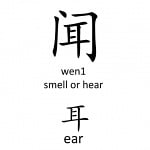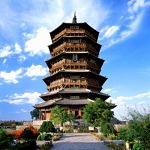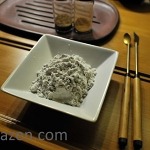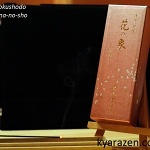The philosophies and ideals of the way of incense is very seldom talked about in online media (perhaps also due to the lack of translations?). Most of what is being said about the Way of Incense (ko-do) is generally process orientated, on how to heat wood chips, make incense trails, kneaded incense balls (which has very deep concepts behind it that no one talks about either!) etc.

Recorded in some Chinese books that had analysed Chinese incense culture, there are four ideals that are represented by incense, which refers to both the state of mind, and the literal description of incense and its use.

和 (he1) Harmony
Embodiment of how constituents of an incense harmonizes each other. Apart from the olfactory aspect of it, it also refers to harmonious feelings. Incenses/Fragrances were used for worship, rituals, gatherings, where people get together, putting aside their differences. Good incense also creates a sense of good will.
敬 (jing4) Respect
Respect for the fragrant material, which can take many years, decades or even centuries for formation. Respect for the process to which incense is burnt, prepared, used. Respect for each other and their preferences in fragrances, incense. Respect, in offering someone a fragrance.
清(qing1) Clarity
This word can be translated in may ways, but perhaps closer to the actual meaning implied, would be the “clarity” used in a Taoist concept which denotes purity or the act of purifying, cleansing one from defilements.
寂 (ji4) Oneness
A state of stillness, silence, where one would be able to appreciate the art of incense.
Kyarazen humbly adds 4 more ideals to his interpretation of Incense culture

馨 (xin1) Fragrant
Every aspect of incense culture revolves about something fragrant as a core.Incense must be fragrant. It is the outcome of the art, combining the understanding of raw materials and how they interact in blending, and the processes dealing with burning.
正 (zheng4) Righteous
Incense materials must be correct, real, authentic, a piece of Jinkoh should never be called nor sold as a piece of Kyara, normal agarwood should not be touted as kynam. Right approach towards blending incenses, with a good foundation of understanding, and mindfulness on the theoretical aspects of raw herb interactions and incense processes.
神 (shen2) Spirit
The psyche, necessary to keep the way/art alive and to be passed to others, than having had it die down, fallen to pieces, requiring slow and meticulous reconstruction.
怡(yi2) Elation
The experience is an important outcome, it must bring to one a state of joy, delight, elation, enjoyment.
Food for thought, these points can be considered or pondered upon then next time you light a stick of incense, or burn some fragrant material. The Way of the Incense, is not one without philosophies that form the core of it, without which, everything can be meaningless.
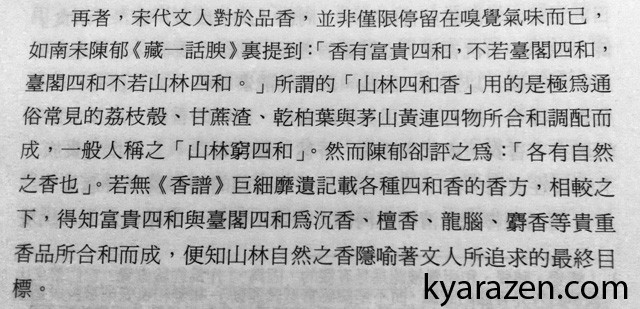
In the literature, it has been recorded that the pinnacle of the Way of incense, is not the ability to use or combine the rarest and most expensive ingredients (such as agarwood, musk, ambergris, etc) into incense, but the ability to create the best fragrance from simple ingredients.
